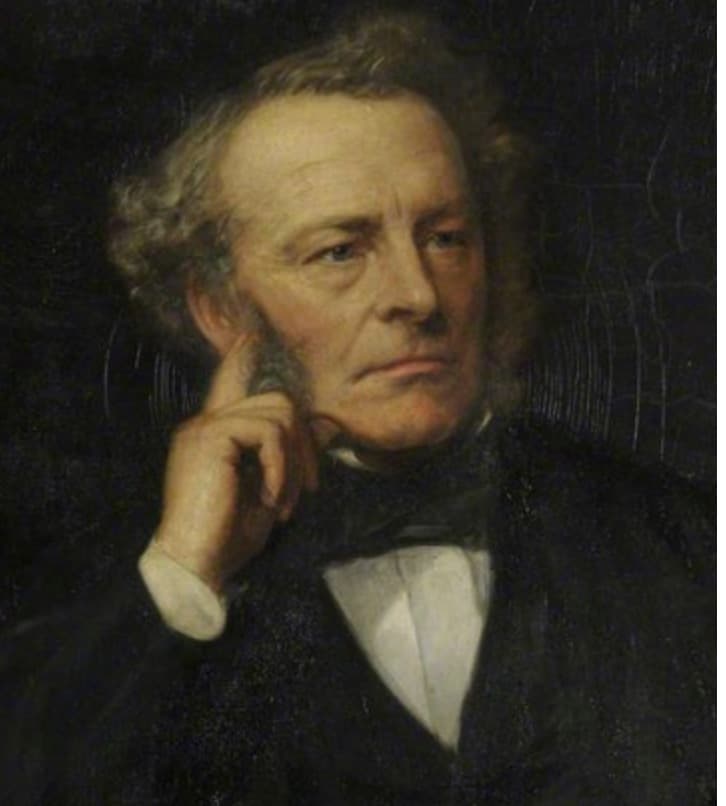
George Stokes was born on August 13, 1819, in Skreen, County Sligo, Ireland. His father was a clergyman and his mother was the daughter of a professor. Stokes’ home life was strongly influenced by his father’s evangelical Protestantism: three of his brothers entered the Church, of whom the most eminent was John Whitley Stokes, Archdeacon of Armagh. John and George were close siblings, and George lived with John while attending school in Dublin. After attending schools in Skreen, Dublin and Bristol in 1837, Stokes matriculated at Pembroke College Cambridge, graduating as senior wrangler, and earning him the designation as fellow of Pembroke.
Stokes initially focused on mathematics, working on topics like algebraic geometry and calculus. However, his first published papers, in 1842 and 1843, dealt with fluid motion and the steady state of incompressible fluids. In 1845, he presented a paper on the friction of fluids in motion and the motion of elastic solids. In 1849, Stokes was appointed to succeed his mentor William Whewell, as the Lucasian Professor of Mathematics at the University of Cambridge–the chair originally occupied by Sir Isaac Newton.
Among his most significant contributions in fluid dynamics, was his formulation of what is now known as Stokes’ law that quantifies the drag force experienced by small particles moving through a viscous fluid and provides a mathematical model for understanding sedimentation and particle motion.
In the field of optics, Stokes made significant strides in developing the Stokes parameters that describe the polarization state of light, He also investigated the phenomenon of fluorescence, which occurs when certain substances absorb ultraviolet light and re-emit it as visible light. This discovery led to the development of fluorescence microscopy, a technique widely used in biology and medicine. Stokes also applied his analytical techniques to the study of sound waves and derived equations that describe the behavior of sound in fluids.
His work in fluid dynamics led to the development of the Navier-Stokes equations, that are useful in describing the weather, the water flow in a pipe or the air flow around an airfoil. The Navier–Stokes equations, in their full and simplified forms, not only aid in the design of aircraft and cars, but also in the study of blood flow, the design of power stations and the analysis of pollution.
Despite their wide range of practical uses, the Navier–Stokes equations are also of great interest in a purely mathematical sense. It has yet to be determined whether smooth solutions to these equations always exist in three dimensions—i.e., whether they are infinitely differentiable (or even just bounded) at all points in the domain. This is called the Navier-Stokes existence and smoothness problem that the Clay Mathematics Institute has designated as one of the seven most important outstanding problems in mathematics, and for which they have offered a prize of US$ 1 million for its solution.
If you studied advanced calculus, you may recall Stokes’ theorem in vector calculus relating the surface integral of a vector field over a closed surface to the volume integral of the divergence of the vector field within that enclosed volume. In 1889, George Stokes was knighted for his contributions to science and mathematics. Sir George Stokes retired from the Lucasian Professorship in 1903 and passed away on February 1, 1903, in Cambridge, England, at the age of 83.
